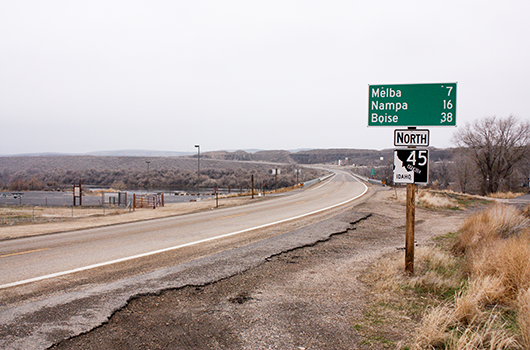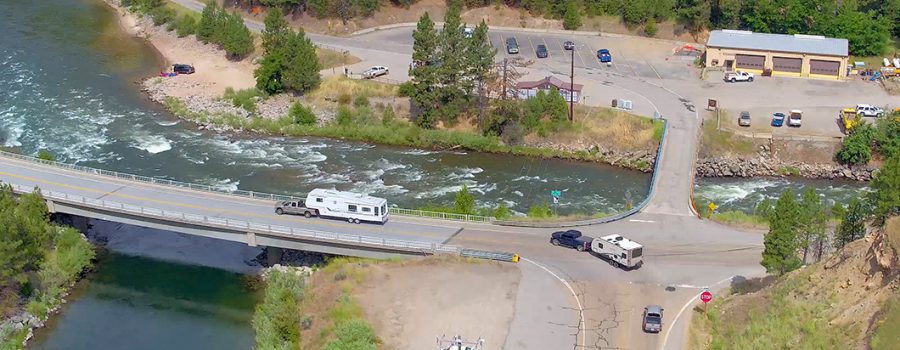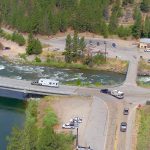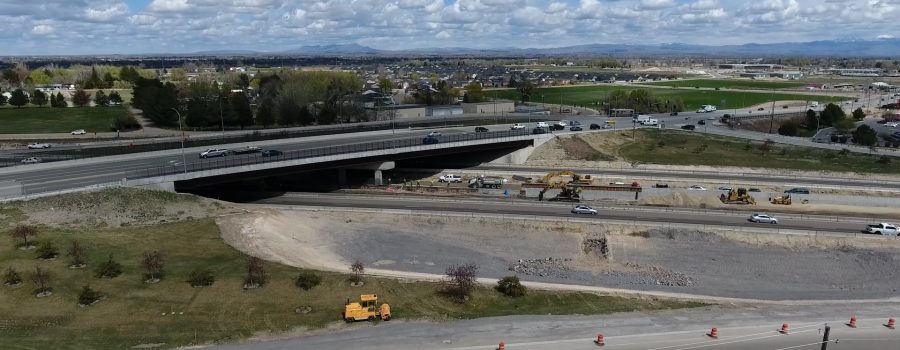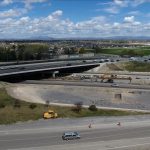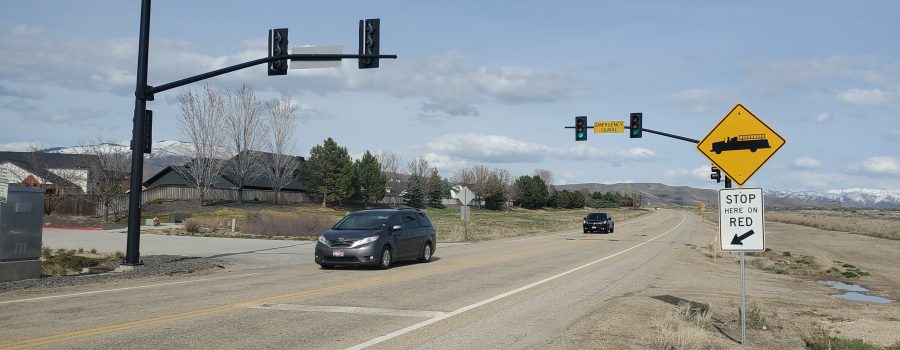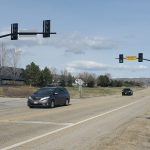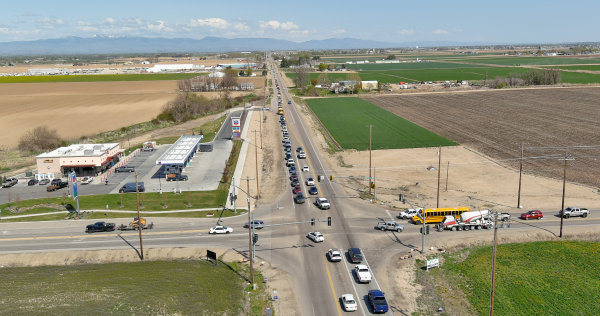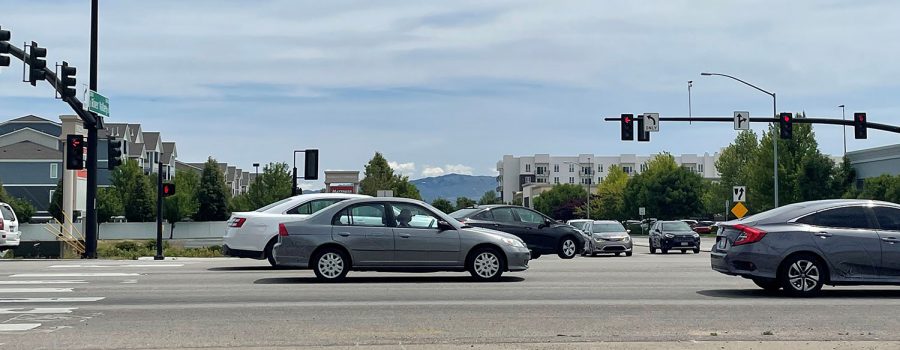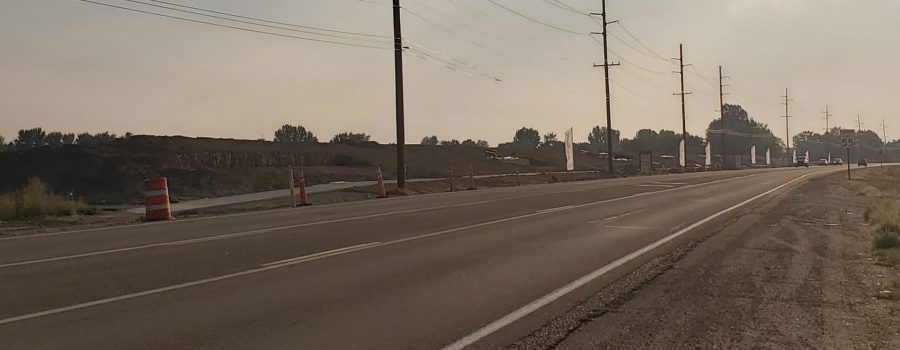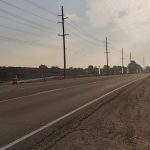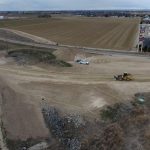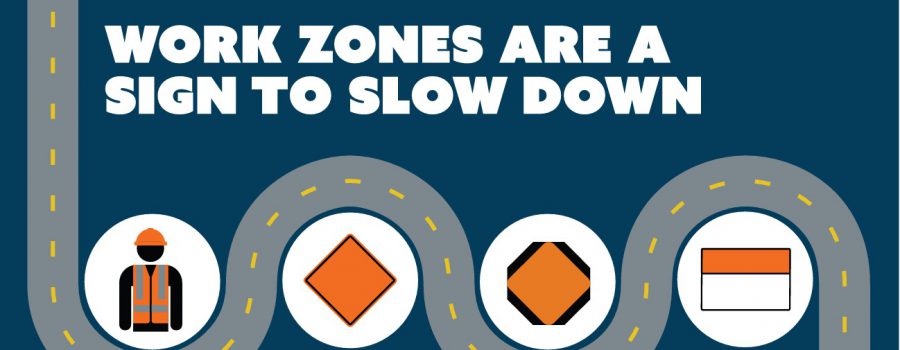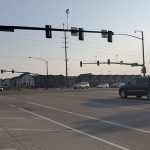The Idaho Transportation Department (ITD) is making improvements to State Highway 45 between the State Highway 78 junction in Walters Ferry and Deer Flat Road in Nampa. Construction on the 13-mile stretch of road will begin Monday, June 27. All work is expected to be complete by early September.
Construction plans include replacing the bridge deck at Mora Canal, resurfacing the pavement between the SH-78 junction in Walters Ferry and Deer Flat Road in Nampa, and widening the turning radius on SH-45 at Missouri Avenue and at Patterson Avenue. This project will extend the life of SH-45.
Motorists should expect the following traffic impacts this summer:
- Work will take place during the day and night.
- One lane of SH-45 will be open with flaggers directing traffic. Please plan for delays up to 15 minutes.
- The speed limit will be reduced.
- Drivers can expect an uneven road surface and bumps when entering SH-45.
- Access to and from homes and businesses may be closed for up to one hour. ITD will notify those affected prior to closures.
Work will temporarily pause over the Independence Day holiday weekend. For more information about the project visit itdprojects.org/45repaving.
ITD and the Idaho State Police advise motorists to slow down and pay attention when driving in work zones, where increased speeding fines and other penalties apply. Motorists are encouraged to plan ahead and visit 511.idaho.gov for information on the state highway or interstate system.
As summer travel increases to Idaho’s mountain destinations, ITD’s Southwest Idaho office will also increase flagging resources at the busy State Highway 55 and Banks-Lowman Road intersection in Banks. ITD will flag traffic on the eight weekends expected to have the highest number of travelers due to local events and holidays. These weekends were selected in cooperation with a community working group involving Boise and Valley County community members.
- Sunday, June 19
- Independence Day, Monday, July 4
- All remaining Sundays in July: 10, 17, 24, and 31
- Sunday, August 7
- Labor Day, Monday, September 5
Plan ahead for any road trip by checking 511.idaho.gov for the latest road conditions, and itdprojects.org for road construction work happening across the state. ITD asks drivers to please do your part to keep roads safe and prevent crashes. Slow down, drive engaged, and always buckle up.
The Idaho Transportation Department (ITD) is nearing a major milestone in the Interstate 84 widening project in Caldwell, bringing extended ramp closures and traffic changes near the Franklin Road Interchange (Exit 29).
Between June and September, each of the ramps at the Franklin Road Interchange will close for six weeks. The closures will allow crews to rebuild the ramps and connect them to new lanes on I-84.
Although exact dates are subject to change due to weather and other factors, ITD expects:
- On June 19, the westbound off-ramp will close at 10 p.m. and remain closed for six weeks. Drivers will be detoured to 10th Avenue, where they can turn around and access Franklin Road from eastbound I-84.
- On June 26, the eastbound on-ramp will close at 10 p.m. and remain closed for six weeks. Traffic will detour down 21st Avenue to Blaine Street, then west to the 10th Avenue Interchange.
- On June 26, Linden Street will close under I-84 at 10 p.m. until late 2022 while crews finish the reconstruction of the underpass.
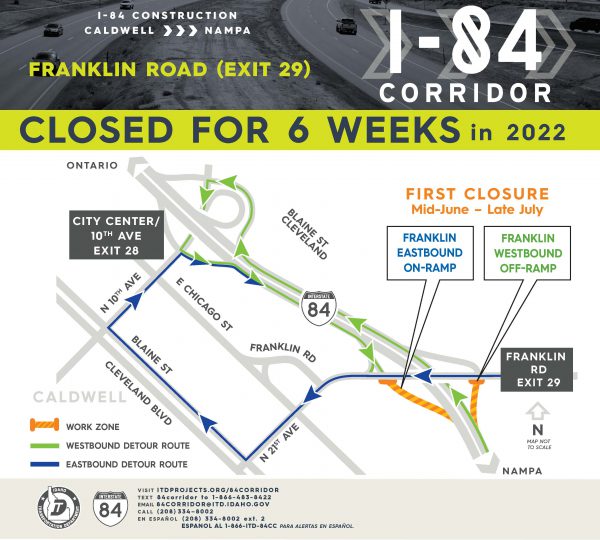
Once these two ramps re-open in late July, the other two ramps will close until early September. In addition to the extended closures, motorists can expect occasional nighttime lane restrictions on I-84 and ramps in the area. To request email or text updates about upcoming closures, text 84CORRIDOR to 1-866-483-8422.
“We have been working with our engineers and community leaders since 2020 to determine the best way to deliver this complex project while keeping traffic moving,” said Shawna King, ITD Design/Construction Engineer. “We ask motorists to be patient this summer and drive safely. We will keep everyone informed and look for every opportunity to expedite the process.”
ITD is expanding I-84 to three lanes in each direction between the Franklin Road Interchange in Caldwell and the Karcher Interchange in Nampa. Traffic will be shifted to the newest lanes in the I-84 median in June, allowing crews to begin rebuilding the existing outside lanes.
Construction on I-84 in Caldwell will be complete in 2023. For more information, visit itdprojects.org/84corridor, email 84corridor@itd.idaho.gov or call (208) 334-8002.
https://www.youtube.com/watch?v=qFDfu_fZnc4
The Idaho Transportation Department (ITD) has started construction to widen State Highway 21 between Technology Way and Surprise Way in Boise.
The project began Monday, May 16 and is expected to finish in late July. Planned improvements include a new center turn lane, wider shoulders, and dedicated right turn lanes at the intersections of Grand Forest Drive, Lake Forest Drive, Old Oregon Trail Road, and Surprise Way. An acceleration lane will also be installed for traffic turning onto southbound SH-21 from Surprise Way. When complete, this stretch of highway will feature two 12-foot wide travel lanes, a 14-foot center turn lane, and 6-foot shoulders.
Construction will begin on the south side of the highway. When paving is done, traffic will shift to the new pavement as crews complete paving on the north side of the road.
The anticipated work schedule is Monday through Friday, 7 a.m. to 7 p.m., with work pausing on Memorial Day, Independence Day, and July 5.
Motorists should plan for reduced speeds through the construction zone, traffic shifts, and periodic delays with flaggers directing traffic. Access will be maintained to all neighborhoods throughout the project. ITD and the Idaho State Police urge motorists to slow down and pay attention when driving in work zones, where increased speeding fines and other penalties apply. Please plan ahead and visit 511.idaho.gov for information on the state highway or interstate system.
For more information and project updates, visit itdprojects.org.
The Idaho Transportation Department asks motorists to plan for intermittent overnight delays as construction continues to widen Eagle Road (State Highway 55) between Franklin Road and Ustick Road in Meridian. The project will increase mobility by adding a third southbound lane along this 1.6-mile segment.
Over the next few weeks, crews will be working to construct new signal and power poles at the intersections of Franklin Road, Pine Avenue, Fairview Avenue, and River Valley Street. This work will intermittently impact traffic during the nighttime hours of 10 p.m. to 5 a.m. Drivers should expect up to 15-minute delays and possible lane closures when traveling through the work zone. Check Idaho 511 for the current work schedule and consider using an alternate route.
Learn more about this project and sign up for construction updates at itdprojects.org/eaglerdwidening.
The Idaho Transportation Department (ITD) begins construction to widen State Highway 44 between State Highway 16 and Linder Road near Star and Eagle on Monday, April 25. Improvements include an additional lane in each direction, wider shoulders, and dedicated right turn lanes at major side streets.
During construction drivers should expect the speed limit lowered to 45 mph and lanes reduced in size from 12 to 11 feet wide. One lane in each direction will remain open during daytime hours throughout the project.
“The large amount of growth in the area has transformed this corridor. The work on this section of State Highway 44 is meant to reduce traffic congestion and improve safety for all road users,” said ITD Design and Construction Engineer Daris Bruce. “Please remember to pay attention and slow down in the work zone.”
Work is expected to wrap up in August 2022.
SH-44 is the only east-west highway that links Canyon County to Ada County north of the Boise River. It connects Caldwell, Middleton, Star, Eagle, and Garden City. Development in the area has changed this once rural corridor into a mix of residential subdivisions and businesses.
To sign up for construction updates, text 44Widening to 1-866-483-8422 or visit the project website at itdprojects.org/SH4416toLinder.
Please plan ahead for Interstate 84 ramp closures and delays over the weekend of April 22-25 between Caldwell and Nampa. As work continues to widen I-84 through Canyon County, beginning Friday, April 22, I-84 traffic will shift from the outside lanes to the new median lanes between Ustick Road and Karcher Road. Please drive carefully and watch for signs.
Speed will be reduced to 45 mph overnight with one lane open in each direction. Both lanes will be open during the day. Additional impacts include the following:
- The westbound on-ramp at Karcher will be closed all weekend, from Friday, April 22 at 10 p.m. to Monday, April 25 at 6 a.m. Traffic will be detoured down eastbound I-84 to Northside Boulevard. Motorists can then enter westbound I-84 at the Northside on-ramp.
- The eastbound off-ramp at Karcher will close at 10 p.m. on Saturday, April 23 and will re-open at 7 a.m. on Sunday, April 24. Traffic will be detoured to the Northside Boulevard eastbound off-ramp.
See detour maps and video below. This work is weather dependent and will be rescheduled if necessary.
This weekend is the first of three shifts that will take place to move traffic into the new median lanes on I-84 between Franklin Road and Karcher Road. Additional shifts will occur later this spring and summer. Once traffic is shifted, crews will start working on improvements to the outside lanes.
Construction is expected to be complete in summer 2023.
For more information about the I-84 widening project, visit itdprojects.org/84corridor or text 84CORRIDOR to 1-866-483-8422 to request construction updates. You can also contact ITD at 84corridor@itd.idaho.gov and (208) 334-8002.
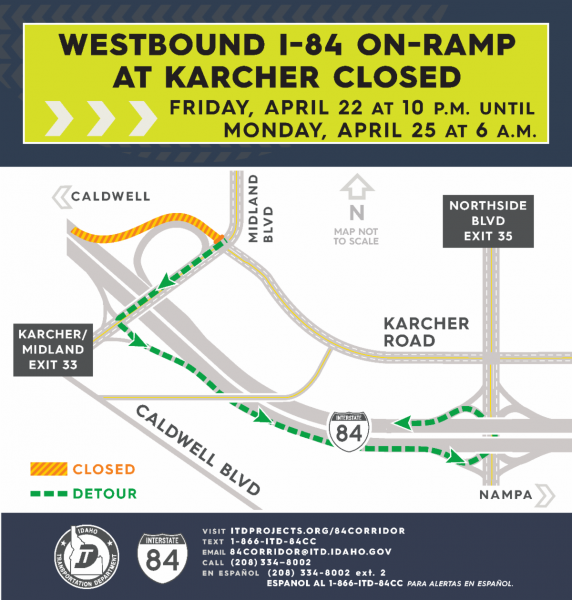
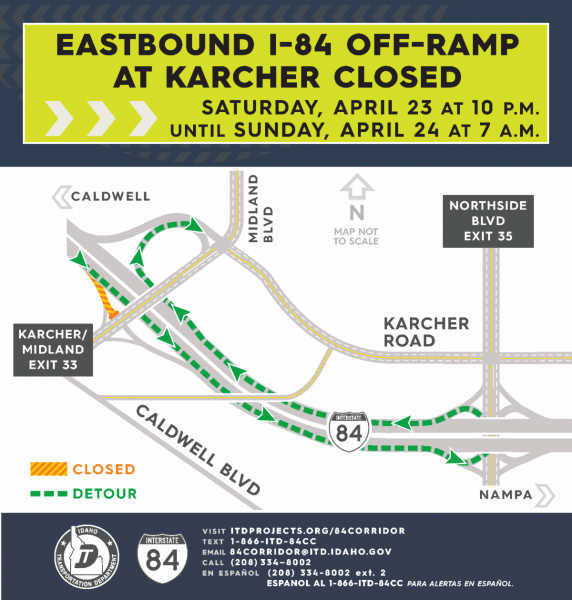
https://www.youtube.com/watch?v=57JfaKRyYps
National Work Zone Awareness Week is April 11-15
IDAHO – National Work Zone Awareness Week (NWZAW) will be observed April 11-15 with this year’s theme of “Work Zones are a Sign to Slow Down.” The Idaho Transportation Department (ITD) is asking motorists to observe NWZAW and prepare to safely drive through work zones across Idaho.
As part of NWZAW, Idahoans are encouraged
to participate in Go Orange Day on April 13 by wearing orange as a visual reminder of work zones. Photos can be posted on social media using the hashtags #NWZAW and #GoOrange4Safety.
The awareness week ends with a moment of silence on April 15 for people killed in work zone incidents.
Statistics from the National Work Zone Safety
Information Clearinghouse demonstrate the importance of work zone safety and participating in NWZAW to spread the message that everyone has a role in getting roadway workers home safely.
- There were 762 fatal crashes in work zones resulting in 842 deaths in 2019.
- Of the 842 fatalities in 2019, 135 were roadway workers.
- Most people killed in work zones were motorists, passengers, and pedestrians.
NWZAW has been observed for more than 20 years and was launched as a public awareness campaign to help everyone understand they play a role in keeping motorists and roadway workers safe.
As construction season kicks off around the state, it’s important for drivers to remember that work zones come in all shapes and sizes. They can be long or short duration and can occur anywhere, from the middle of a large city to even the most rural routes. ITD encourages all motorists to plan ahead, follow signs, and drive engaged each time they get behind the wheel.
To learn more about NWZAW, visit nwzaw.org.
The Idaho Transportation Department will hold an open house on Thursday, April 7 to share construction plans for the widening of State Highway 44 in Ada County. Community members are invited to drop in between 4:30 and 6:30 p.m. at the Eagle Christian Church – Central Valley on 100 Short Lane, Eagle, Idaho 83616.
ITD representatives will be available to discuss the final design and construction plans and answer questions. Display boards and visuals will also help attendees learn more about the project. The same materials will be posted for viewing online at itdprojects.org/SH4416toLinder from April 7 to 14, for those unable to attend in person.
Work includes widening SH-44 from three to five lanes between SH-16 and Linder Road to improve safety and traffic capacity. Shoulders will also be widened and dedicated right turn lanes will be added at major side streets.
Construction is expected to begin in May and wrap up by this August.
SH-44 is the only east-west highway north of the Boise River linking Canyon County to Ada County. It connects Caldwell, Middleton, Star, Eagle, and Garden City. The large amount of growth in the area has transformed this once rural corridor.
For more information, please visit the project website at itdprojects.org/SH4416toLinder.
